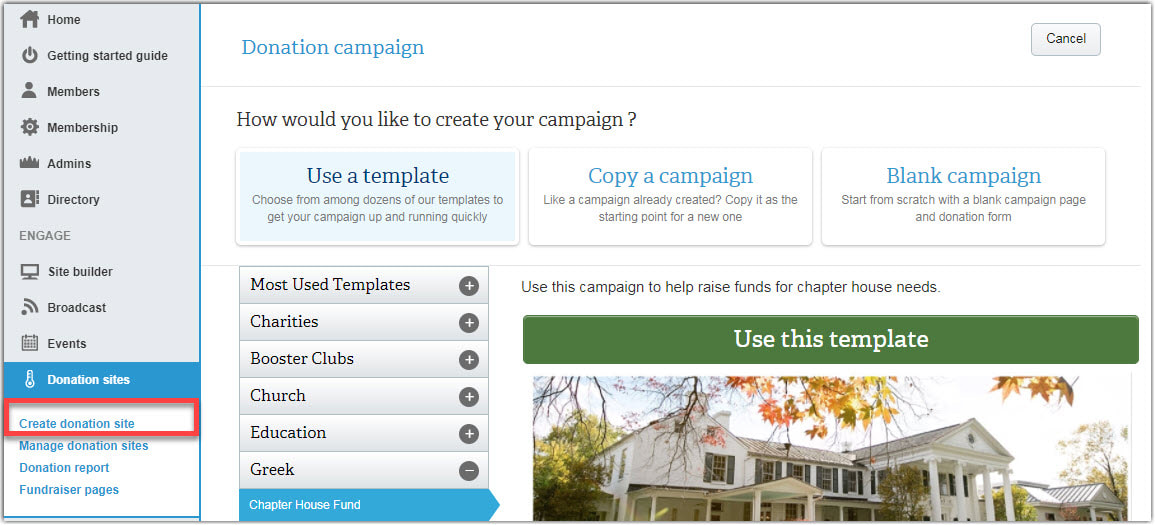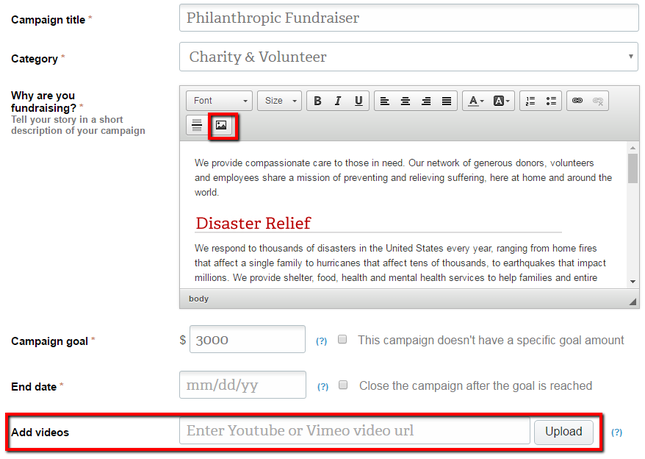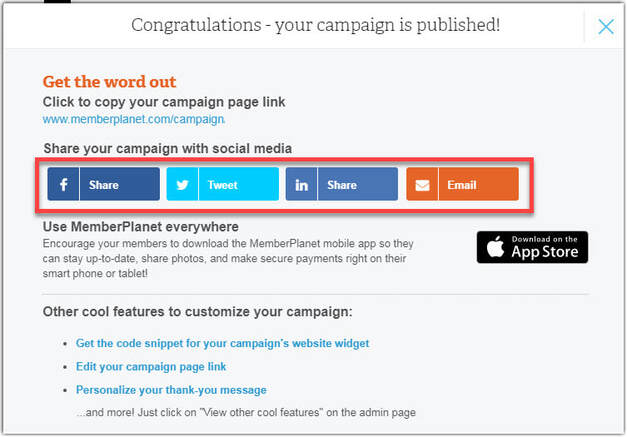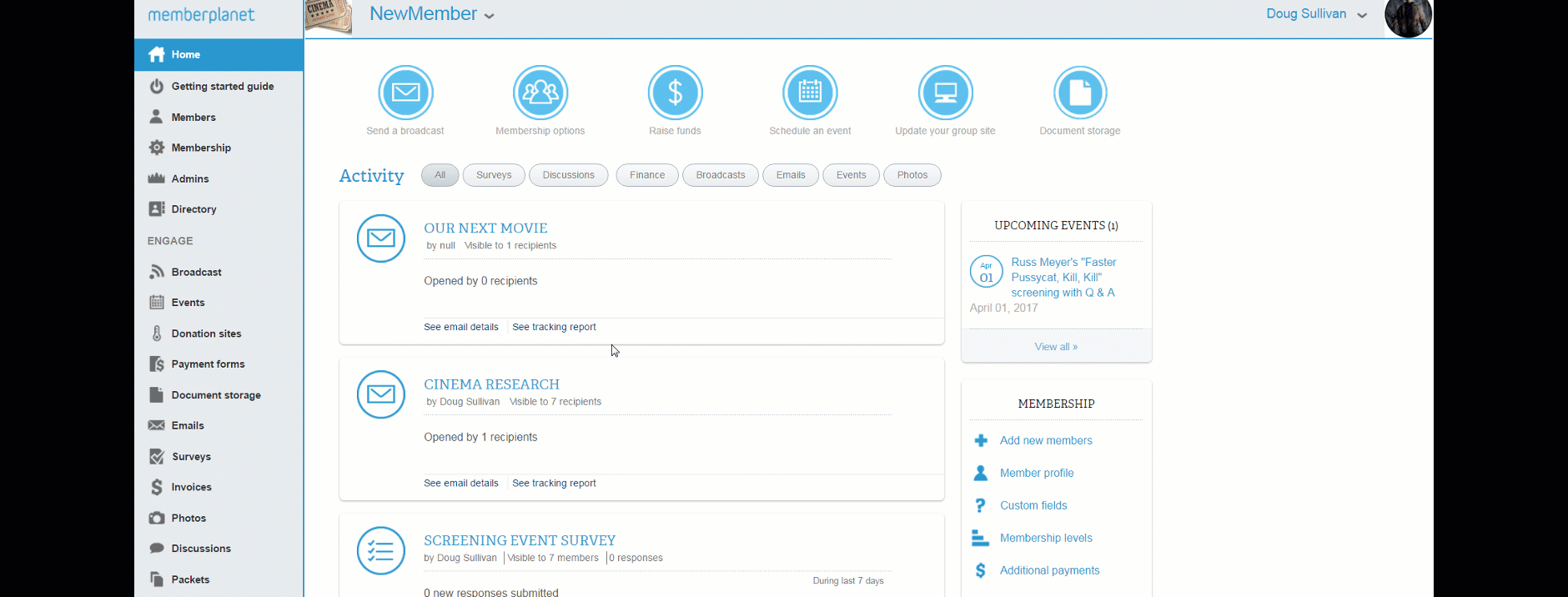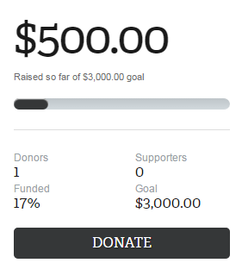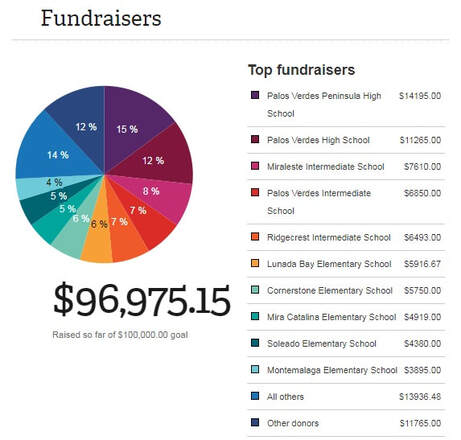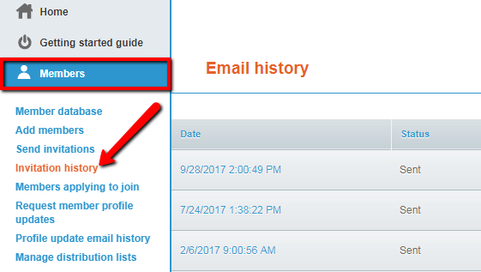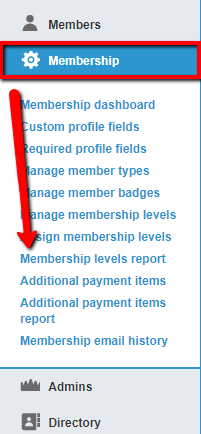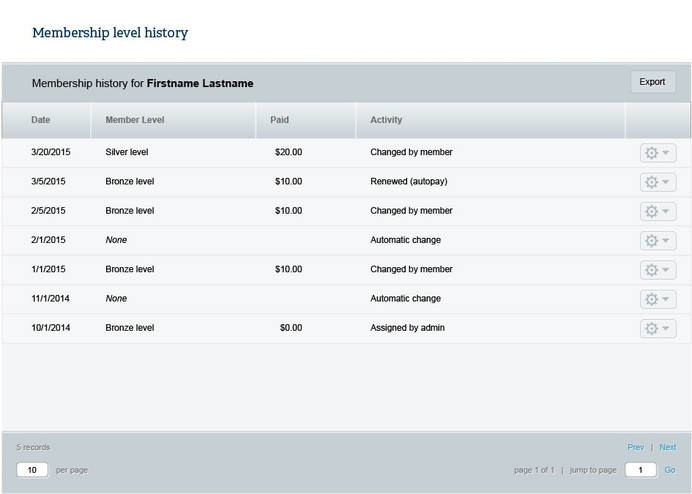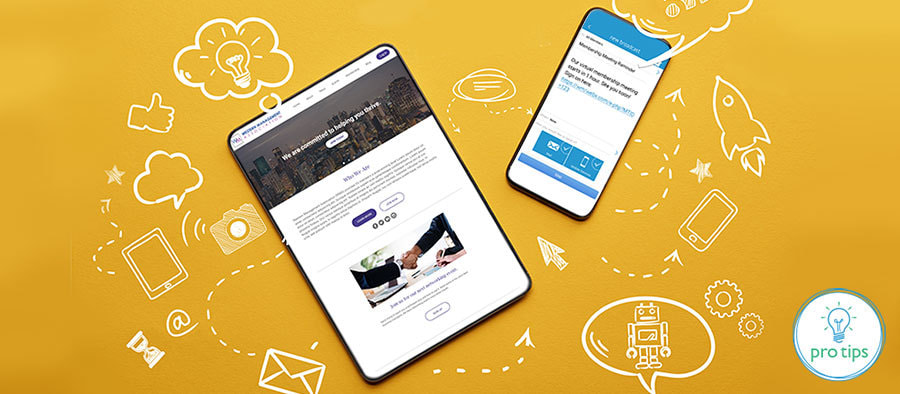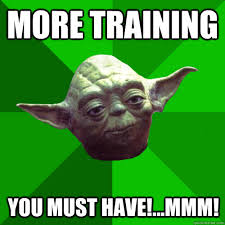|
The days of cash being king are over. Unless you’ve been living under a rock for the last couple decades and somehow remained oblivious during the COVID-19 pandemic, you’ve noticed a societal shift toward electronic or contactless payments. What does this mean for you and your organization? Ignoring this trend can seriously hurt the future growth of your organization, whether you’re managing a local nonprofit, chapter of a multi-level association, golf club, or any other group. Credit card processing fees may seem like a deterrent, especially if your group consists of volunteers, but the benefits are enough to outweigh whatever costs you incur – and we have proof. Check out these five payoffs of accepting electronic payments.
1. Appeal to a wider audience
Studies say that on average, Americans have four credit cards each, and the majority of consumers pay with debit or credit cards instead of cash. This means that accepting credit card payments increases your ability to attract potential members or donors who find electronic payments more convenient. You can connect with a larger audience to recruit and build your organization, reach more donors for your campaigns, and increase sales for your merchandise or services.
2. Increase revenue
Appealing to a wider audience translates into higher revenue. Research shows that people are willing to spend more on their credit cards than when making cash purchases. This has obvious benefits for fundraising campaigns, as it can lead to bigger donations from individuals. The New York Times cites several studies that demonstrate the increase in spending with credit versus cash of at least 5-10%. Another often-cited study states people spend 12-18% more when paying with a credit card.
3. Direct deposit increases cash flow
If you’re paying out of pocket to reserve a venue for your organization’s event because members couldn’t pay in advance, that’s a cash flow issue. Accepting electronic payments increases cash flow by limiting the time it takes for money to appear in your account. Instead of waiting for members or donors to mail a check, then depositing the check, and then waiting for it to clear, funds can be deposited directly into your account and processed quickly. This also removes the burden of holding onto large cash sums until you can make a deposit.
4. Build credibility with credit cards
5. Simplify recurring payments and donations
Organization members and donors can set up recurring membership payments and donations. memberplanet makes this easy by allowing you to accept electronic payments that will be processed and deposited directly into your designated account. Simplifying the payment process makes it easier to collect membership dues and retain current members, and is beneficial for collecting donations during fundraising season.
Accepting electronic payments simplifies the exchange of money for you and anyone you collect payments from. This is beneficial and convenient for collecting membership fees, receiving donations, and selling event tickets or any other product or service your offer. With an evident shift from cash to credit, it is essential to offer a variety of payment methods in order to retain members, grow your organization, and maximize potential revenue for your organization.
Updated since original publication on 05/20/17.
0 Comments
Traditional fundraising methods still have their place. However, due to COVID-19, the world has shifted toward an increasingly digital landscape, and it may be time to re-evaluate your old techniques. Online fundraising offers a multitude of benefits and can help you surpass your fundraising goals when you use the right platform. Don’t be put off by the fees — here are five reasons why you should fundraise online.
A bigger payoff
You might be concerned about the fees associated with online fundraising and whether they will cut into your net goal. It is important to do the research and see how various sites structure their cost.
Convenience
Electronic payment methods make raising money faster and easier than ever, because, let’s face it – not everyone carries lots of cash or a checkbook these days. With memberplanet’s mobile app, users can donate directly from their phone at any time and easily opt in for an automatic, recurring donation. By offering the option to collect all payment types both onsite and online, you can access a larger network of donors. This will allow you to raise more money for your cause.
Security and credibility
Go viral
One of the main benefits of launching an online fundraising campaign is its potential to go viral. This takes you out of the typical sphere of donors and opens you up to supporters you wouldn’t reach with traditional methods. This can help you reach your monetary goals faster and even surpass them. Look for sites that offer a direct link for social sharing from your donation page to maximize exposure. Note to memberplanet users: Make use of our built-in URL shortener or share on social media directly from our platform to save time and (when you need it) character space. Online campaigns give you the freedom to create a donation page that reflects your cause. Customizable templates and forms let you streamline the look of your fundraising page. You can add photos, videos and other interactive features to increase interest and support, which translates into larger dollar amounts.
Crowdfunding is mainstream
Crowdfunding has gained momentum over the past decade and is only becoming more popular. It offers easy payment methods for donors, makes tracking donations easier for admins and is easily shareable across social media. It’s an effective and efficient way of framing a fundraising campaign. memberplanet users: It’s never been easier to set up a donation page. Customizable templates and forms let you streamline the look of your fundraising page or marketing campaign. You can add a live donor ticker to monitor the campaign’s progress, as well as photos, videos and other interactive features to increase interest and support, which translates into larger dollar amounts. Paying a small fee shouldn’t be a deterrent when weighed against the many benefits of the platform. Streamlined payment methods, global reach, and customizable templates are just some of memberplanet's features that will help you orchestrate a better campaign and grow donations.
Updated since original publication on 5/15/2017.
As an organization leader, one of the highest mountains you’ll need to climb is reaching your fundraising goal. Whether you’re planning for a big Greek Week event or something small for a local nonprofit, running a successful campaign requires organization, dedication and clear definitions of your goal. Combining our fundraising features with these simple tips will help optimize your donations and reach that mountain’s peak.
1. Take advantage of online convenience
The whole point of fundraising online is to make it as easy as possible to meet your goal. Using a template (we've got a free library templates!) will cut out a few steps to give you a head start, so you can get your fundraiser launched fast.
Another major convenience is tracking - without the actual paperwork. Transaction-level data is available in the Reports module, and if you're an HQ staff member who's overseeing multiple local chapters or child groups, you can view aggregate reports. Donors will automatically receive email receipts, which can also be customized to include info about your 501(c)(3) organization for tax reporting purposes (check with your accountant first). Let's get started! First, make sure you're logged into memberplanet and you're viewing your group portal, which displays your admin tools. 1. Click Donation Sites on the left navigation sidebar 2. Select Create Donation Site from the submenu
3. Select a template for your campaign
4. Follow the rest of the prompts to create a donation campaign Offer electronic payment methods. Making the most of digital fundraising techniques can help you reach a larger pool of donors, not just the ones who are willing to pay by check or cash. Offering electronic payment methods gives members the option to donate by their preferred payment method, use their phone, and sign up for automatic, recurring donations. Optimize your page for viewing on any device. Online fundraising also allows you to share information quickly to a large audience, so make sure your fundraising page is designed for optimal viewing on any device. (If you’re using memberplanet, we’ve got you covered).
2. Use visuals to appeal to your audience
Incorporating visual elements, such as video and photos, is an effective way to create a voice. It’s important to not just think about your plan for obtaining your goal, but to also focus on why it’s important. Conveying the “why” to potential donors deepens their connection with the cause and appeals to their emotions, which translates into more money for your organization.
To add photos and video to your Donation Site, select a template to edit, or select the existing campaign you want to edit. Click the photo icon to upload photos, or copy and paste a video URL in the Add Videos field.
3. Reach out to your inner circle
4. Adopt a social media strategy
We see social media as part of a larger multi-channel communication strategy, which is to communicate with members using the channels (email, text message, social media, etc.) they prefer. Today,72% of the public uses at least one social media platform. And a 2019 nonprofit report stated that $2 billion had been donated through Facebook. If you’re still not using social media to fundraise, you’re missing out on a great tool for spreading the word about your campaign in a fast, cost-effective way. Figure out which social media platforms your target demographics are using, and start by engaging them on those platforms.
memberplanet users: As soon as you publish your donation campaign, you can share your site to social media directly from the platform, mobile app, or the page itself.
Use our built-in URL shortener if you’re on a character limit, or customize the full URL.
To customize the URL or get the short URL, click on the campaign you want to manage.
If you are leveraging peer-to-peer fundraising (and you absolutely should!), you can enable a pie chart on your site, which will display how each of your fundraisers/supporters are contributing to the campaign. Friendly competition by way of seeing how others are stacking up also drives donations!
6. Follow up
Set up an automated thank-you email to your donors to go out immediately after receiving funds. In it, you can encourage them to spread the word about your campaign. Go the extra mile and share the impact of your campaign with donors, staff, and volunteers. Leave them feeling a genuine sense of gratitude from you. This encourages them to participate in upcoming events and fundraisers from your organization. You can easily send an email to all your members and participants, but it’s better to tailor messages to target specific recipients, such as generous donors and key players of your team. (Learn more about how to add a thank-you message.)
Our fundraising features were created to help you build a great campaign and maximize donations. Now that you know some excellent ways to reach your fundraising goal, you can focus on getting to the top of that mountain.
Updated since original publication on 3/8/18.
You have a hunch about how your organization is doing, but a gut feeling is not going to cut it. You need to look at specific data to see what's working and what isn't. Don't just jump in and start measuring absolutely everything. Pro tip: First focus on these three crucial reports ─ email tracking, invitation history, and levels reports.
1. Email tracking report
Even the busiest membership manager needs to track ─ at the very least ─ email rates. With all the email campaigns you create, it’s helpful to see whether the messages are benefiting your constituents… or not. Here’s a look at three email rates to keep your eye on. These key performance indicators (KPIs) will let you know whether folks are actually receiving, opening, and reacting to your emails:
Based on a recent email benchmarking report, the average open rate for nonprofits is 25.5%.
The report indicates that the clickthrough rate for nonprofits is 4.10%.
One report cites a 0.5% bounce rate for nonprofits, although a popular email service provider reports a 10.25% bounce rate for its nonprofit customers. To view opens, bounces, and clicks to your email campaigns on memberplanet, hover over Emails in the left navigation sidebar, then click Email Tracking Report in the submenu. Any type of email marketing service (even the ones that let you create an account for free) should provide these basic metrics.
For the date range selected, your email campaigns will be displayed with corresponding metrics.
2. Members invitation email history
You've worked hard to boost membership. If you implemented a membership drive or promotion, you probably emailed prospects to join your organization. What were the results? If you're using an association management system (AMS) or membership management system, it should track that. On the memberplanet platform, you can view your membership email history to track who was invited and how they responded. It’s a best practice to periodically send out invitations to prospects. To become members, recipients only need to make a membership payment or provide info to sign up for a free membership, if you offer the option. A membership invitation history report shows which admin sent the invitations and when, who opened it, and whether the recipient accepted the invitation. To view your group’s member invitation history on memberplanet: On the left navigation sidebar, hover over Members and click Invitation History in the submenu.
3. Membership levels report
Sometimes, in a rush to drive membership, managers and admins forget to look at overall membership tiers or levels activity. If you’re only looking at new prospects who signed up for a free membership level, you might not quite get the complete picture. Most organizations have different levels of membership, including free and multiple paid levels. An AMS should have a levels activity report readily available, which will save you a ton of time. The alternative is viewing manually updated reports in Excel. A membership levels report gives you a bird’s-eye view of how many members are on each level, as well as a granular view of the history of each member’s level. Are you finding that a lot of members have downgraded their membership level? If that's the case, you'll know which members and levels to cater to more frequently. You may need to review member benefits to ensure each level offers the value they’re willing to pay for. You can also target members on a specific level and influence activity by creating events and content to keep members engaged. Here's how to view the membership levels report on memberplanet:
2. On the levels tab, click the gear icon for the membership level you wish to view
3. Select View Members from the dropdown menu
All this business intelligence will help you become a better, more informed membership manager or admin. You also can look at other metrics, such as survey results, donations, payments, events, RSVPs and so much more – we have reporting for just about everything on the platform. If your organization has chapters or components, staff can benefit from a customized membership dashboard, aggregate reports and ad-hoc reporting, too. Visit memberplanet.com to learn more.
Updated since original publication on 03/02/2018.
We’re all guilty of scrolling through Facebook or Instagram before our heads hit the pillow at night. While social media has become a popular way to kill time, it also has many practical uses.
As an organization leader, you are already aware of the necessity of branding across various platforms, so here are our top five ways to bolster your online presence by optimizing your social media engagement strategy, first and foremost with your own constituents.
1. Deliver digestible bits
Newsletters are great for providing various bits of information to your members all at once. Social media is best for delivering a brief, compelling message to a large audience, but you only have a small window of time to get users to interact with your post. Providing relevant, unique and easily digestible bits of info should be the focus of your social media strategy. Nobody wants to scroll through a Facebook post or read a tweet with three continuations. You can prompt users to click through to a website by providing a URL within your post where they can access more information.
2. Promote your cause
Social media is an efficient and cost-effective way to broaden the reach of your cause, mission, fundraising campaign, or any other promotion. Whenever you send emails to your members, ask them to follow your organization’s social media handles. And make sure your posts tie in the cause or mission that appeals to your followers. People in the United States average two hours per day checking social media, making it a great promotion tool. Note to memberplanet users: You can easily share your event or donation site to social media directly from the platforms. Group admins and members can also do this directly from the event site, donation site, or mobile app.
3. Include video
You don’t have to be Einstein to figure out that social media users watch A LOT of video. Our own metrics reveal that video posts on Facebook and Instagram get about double the engagement than photo posts. So consider creating a short video explaining your cause. There are a bunch of free services online, such as Canva, that allow you to easily edit and download your video. Live video content has been on the rise; on Facebook, 1 in 5 videos is a live broadcast. You can get more exposure by finding creative ways to use features like Facebook Live or Instagram stories to get your message out.
memberplanet users: Adding a video to your donation site, event site, or email is also quick and easy.
4. Utilize a social media calendar
Hiring a social media manager or finding a volunteer who’s up for the task is a great way to stay organized and on top of your online presence. A social media manager is responsible for curating and creating content and making sure it gets posted at the right time. If you’re a team of one, utilize a social media calendar to minimize your time spent creating content. Hubspot has a free calendar template you can use to get started. Knowing when to post and what to post will help you strategically plan content for your members, as opposed to overwhelming their feeds or posting haphazardly.
5. Target the platforms your audience use
Facebook is the most popular social media platform (2.74 billion monthly active users) but you shouldn’t limit yourself to one network. We recommend using the social media platforms your target demographics use. Instagram, YouTube, and Twitter are major players in terms of their reach. By creating a diverse portfolio of social media strategies, you are likely to connect with more members and prospects. Twitter is a great way to get out a short, timely message and interact with a large audience, especially if you use hashtags effectively. LinkedIn's largest group of users is older, 46-55, in comparison. You can provide links to your website or event page. memberplanet’s donation, event, survey, and payment form modules have built-in URL shorteners, so you can save space for the character limit. (There’s no excuse for putting out an ugly tweet.)
Social media is great tool for spreading the word about events, campaigns, and general information about your organization. It allows you to be social (obviously) and interact with your constituents consistently and in real time without flooding their inboxes with emails. Building a strong online presence can also attract the attention of potential members while keeping current ones engaged.
Follow us on social media for more social media and membership management tips.
Updated since original publication on 10/5/2017.
Great trainers are naturally great leaders. And by definition, great leaders are those who inspire confidence, strength, and optimism. They are the folks who can motivate – not force – their administrators to reach their fullest potential as they ascend to a new role or take on greater responsibilities. And we all know how important a good trainer is during officer or staff transitions.
The term admin can be applied broadly – it can mean your committee heads, officers, or anyone you’ve put in charge of tasks that keep your organization running smoothly, whether it’s an association, chapter, or other type of membership-based group. As far as training the best admins goes, a great trainer/leader uses methods that can be boiled down to a few guiding principles. I call them 5 Keys to Training Your Staff Admins; master these, and your team will be set for success.
1. Demonstrate
For every specific skill or task to be instructed to your team admins, explain first what it is you’re about to share. More importantly, explain why it is important for your organization. How does it work in its specific scope? How does it affect the overall team? It’s important to give a sense of the overall flowchart of the group and the admin’s role within it. “A leader is one who knows the way, goes the way, and shows the way.”
2. Observe
You’ve provided the instructions to light the path. Now have your team show you how to do it. You’ll be able to see if how much they’ve retained from their training, and how well they apply their knowledge and adapt to different situations. Of course, knowing what you know, don’t keep them in the dark. Adjust the course when necessary. Encourage and empathize.
3. Tailor
We are all individuals (maybe some are more like rebels) in the world, and personality will eventually be revealed, especially in the course of training. Make time to discover your admins’ own skills and experience. Do they enjoy a steady pace? Or do they work best at light speed? But be sure to recognize their different ways of learning, and be open to adapt to give each of them the answers they’ll need ongoing.
4. Empower
Grow your staff admins. As they navigate their new role, give them space to make mistakes – that’s how we really learn. Assign a project or task as a test (e.g. an upcoming social event, or a fundraising campaign, or a yearly calendar of projects) and see how they rise to the challenge. Let them own it. If they can construct it, it’s like a rite of passage.
5. Support
Provide support and feedback. Work with each admin to set up short- and long-term goals for themselves and the organization and make sure they know how to use the tools available to them. On the feedback loop, too, show them what’s been done previously by their predecessors. Encourage them to find ways to innovate and improve efficiency while building on past successes and the great work that’s already been done.
Even after they’ve completed their training, seek out your staff admins’ feedback and listen to their perspectives. Learning is a two-way street, and hearing from them will bolster your own knowledge and help you further educate them. When your admins are confident that you as their trainer/leader have their back and their interests at heart, they’ll operate at peak productivity, and they will lead the rest of the organization in the way they’ve been instructed. This is the way to build a lasting team and community. “Without a sense of caring, there can be no sense of community.”
Updated since original publication on 02/12/18.
Here we are again. It’s the time of the year when we have to start setting goals for our organization. And after 2020, a year like no other, 2021 is sure to be interesting.
When it comes to goals, there’s one key question we need to ask ourselves: Can these goals be told in a story? You’ve heard the adage: Facts tell but stories sell. It’s true in marketing and advertising. It’s equally true when it comes to setting goals for an organization. That’s because setting a goal is just the first step in the process. After we’ve developed goals for our organization, we have to sell it to the troops, and we need to do it convincingly. If 2020 forced us to prioritize what was most important to us in life, then our goals for 2021 must be endeavors worth pursuing. And that comes down to good communication skills. It’s a fact. People make decisions based on emotions rather than logic. Whether we’re trying to accomplish a specific task or raise funds, we have to be able to communicate our goals clearly and emotionally to our members and constituents. We have to bring people on board. Rally our members to our cause and lend their support. Y’know, herd cats. (If you've ever tried that, you know it's very hard to do.)
If we want others to join us on our quest, we have to be able to show our members why ours is a worthy cause. The more enthusiasm we can generate about our goal, the easier it will be to accomplish.
How do we inspire the type of passion that we want from members, the type of enthusiasm that’s going to carry us through good times and bad until we cross our goal line? With a good story. How true it was when "Game of Thrones"' Tyrion Lannister said, "There’s nothing more powerful in the world than a good story. Nothing can stop it. No enemy can defeat it." Whether our objective is a one-time, standalone goal (think sponsoring a clothing drive for natural disaster victims) or part of a larger, long-term initiative or mission statement (think serving the needs of children with disabilities) a good narrative helps us communicate more persuasively with our members. The more we can connect with people on an emotional level, rather than a purely rational one, the more excitement we’ll generate for our cause, the faster we’ll achieve it … and the invested everyone will feel. According to Joseph Campbell, one of the world’s foremost authorities on the significance of myths and storytelling, “Everything starts with a story.” “Everything starts with a story.” – Joseph Campbell
Great stories touch us on an emotional level and teach us universal truths about human conduct. Think about it: Every story we’ve ever been told has had a point to it, a theme. The theme is a lesson about life. Something to which humans should aspire. A goal.
Consider your goals from a storyteller’s perspective As we set goals for our organization, let’s take time to consider these goals, one by one, from a storyteller’s perspective. Every story has a hero. In our case, the hero is our organization. Every story has a conflict. There’s something wrong that needs to be fixed. Perhaps we’re trying to raise money to send aid to families with children adversely affected by COVID-19. The conflict is, some children don’t have means to basic necessities, and our organization wants to fix that. Every story also has a resolution. In our case, it’s our objective. Accomplishing our goal will resolve the issue at hand and bring the story to its close. 
Can we incorporate these elements into our goal and use them to weave a compelling story that captivates our members? The truth is, people have a fundamental need to connect with something larger than themselves.
A good story about our organization and its goals will help bring more people into our tent and enfold them into its larger mission. As organizational leaders, we must be able to find the narrative within our cause, capitalize on our natural storytelling strengths, and express our goal with clarity, creativity and conviction.
Embrace the conflict
Oh, yeah. There’s one more thing to remember, too. By definition, great stories involve a journey that is rarely easy. In fact, as is often the case, the more conflict, the better the story. So let’s approach our goals with the same mindset. It won’t be easy to achieve (and, if it is, perhaps we’ve set the bar too low). In most narratives, the hero has a long-term goal that is fed by a series of short-term goals. Accomplishing our short-term goals are the means by which we eventually achieve our ultimate mission. We can think about our organizational goals the same way. Our long-term goal is usually provided in our mission statement. It is our story’s theme. As you know, our long-term mission is achievable, measurable and time specific.
Our mission (not an impossible one) then must be broken down into shorter-term functions and operational initiatives. Short-term goals are great ways to identify specific functions that need to be undertaken, and offer measurable results that allow us to chart our progress, feel a regular and much-needed sense of accomplishment, and move us further along the narrative toward our ultimate goal.
And it’s that sense of accomplishment – of fighting for a cause, righting a wrong, creating a better tomorrow – that creates the pride and emotional connection that will keep our protagonists (members) coming back for more. So when it comes time to set a goal for your organization, be bold, creative and inspiring. Identify the story inherent within your mission and use it to assemble your short- and long-term goals. In the end, the goals you set today will become the stories your members live tomorrow. Let’s make them exciting ones!
Have a goal in mind? Our event and donation sites (templates included!) make it easy to tell your story.
Updated since original publication on 12/16/16.
You’re put in charge. Now what? Group leader transitions are not without their complications, but that doesn’t mean they have to be difficult. By following a few key steps, you can ensure a smooth transition (think smoothie, not boba) that is beneficial for the entire organization. The transition period is the time for new admins to prepare for their position while outgoing officers gain a sense of closure as they move on from a job well done. The goal is to maintain a sense of seamlessness and continue the great work that’s already been completed. Remember, you’re not starting from scratch. When done right, you avoid setbacks (which might feel like a chunk of fruit stuck in your straw).We’ve put together three pro tips for pulling off the ol’ switcheroo with minimal disruption to your organization. 1. Maximize your training Access to information is critical for the continued success of the organization and the potential achievements of the incoming officer. They say teamwork makes the dream work, so make sure new and old leaders come together as a unit to make the transition easier and more effective. Maximize the opportunity to learn from the outgoing officer by asking the right questions during the training period. Author and business mentor Michael Hyatt identified 20 key questions to ask other leaders to bolster your own skill set. Here are some key topics to inquire about during the transition process:
Additionally, reviewing goals and objectives from previous terms allows transitioning admins or group leaders to update themselves on the progress of those goals, so they have a reference point for the upcoming term. The former officer should provide a status report on ongoing projects as well as current budget and financial records. To help you build upon the work that’s already done, check out the reports section on the platform, which provides a history of your group’s transactions. You can also see tracking for emails, event sites, and donation campaigns. 2. Make a great first impression We all know that first impressions matter, so this transition period is the time to showcase yourself to the group. Membership management software is a helpful tool because it lets you access current membership information and reach out to the entire organization simply and efficiently. Use it to send a group email to introduce yourself and let members know about the transition process, upcoming meetings, and any changes the new administration will be making to its agenda. You can target your email to specific member levels for a more personalized message, as well as use the Smart Lists feature to segment your distribution lists by variable data. 3. Be prepared to prioritize An incoming leader can get overwhelmed with information overload, so being organized is essential. Updating lists and prioritizing tasks can make the early days of transition less stressful. Your organization probably already has a list of essential documents you’ll need to get started, but here are some of the basics you don’t want to overlook during the process.
Online document storage is available on the platform to upload documents that can be shared with all your admins. If you’re a new admin user, simply check document storage in your admin portal to see what’s already been uploaded.
Once you have obtained and sorted through these documents, you'll be able to focus your efforts on the most pressing issues as a new leader for your organization. Uncle Ben (of Spider-Man fame, not the rice) said, “With great power comes great responsibility.” You don’t need to be a superhero to learn the value of this lesson. “With great power comes great responsibility.” As a group leader, you set the tone for the entire organization. It’s important that you stay up to the task by being prepared and making the most of the officer transition process. Maximize the resources that are available to you and build upon the wisdom of past leaders and current colleagues. Orchestrating a successful transition is your first task as a leader, so make it count! By keeping important documents, reports, contacts, and everything else in one spot, memberplanet simplifies leadership and officer transition. Log in to check it out. Updated since original publication on 12/11/17.
Whether you’re the leader of a fraternal group, a religious group, a nonprofit, or any other type of organization, there’s a good chance that the beginning of the quarter or the change of seasons will mean a time of transition in admins to a new guard. Or, it could just mean that the calendar will be a lot busier, and extra hands will be needed to execute your group’s plans. It’s always a good idea to be prepared for the departure of your current group of seasoned officers, or the necessary addition of other capable personnel to the mix – but really, all you need to do is remember a few important things. 1. Plan ahead, and then plan earlier As any good recruiter will tell, the first step to give your group the most optimal chance of continued success is to give everyone the widest possible space and time to not be caught by surprise. Observe who’s currently doing what for your group at each level of the organization, and then project into the future who’ll be serving in those functions in both the short and long term. While there’s a good chance that folks will already be chomping at the bit to volunteer for new positions of responsibility, you should always be ready to actively look for someone to fill the spot(s). Recruitment-wise, build in enough time to find and prepare your successors before they’re on the job. Whatever time you think will be necessary to cover the basics and beyond, add in a bit more of a time buffer to the duration just in case. 2. Know the idea, and the ideal Use your own experience to guide the creation of your own actual list of requirements – yes, a written down list – of what’s needed for the position. What’s worked for your group in the past? What hasn’t worked? What do you wish you would have known before starting your role? As the person who’s been performing these functions over time, you’re really the best suited to know the “idea” of the role. Keep in mind, too, your sense of the “ideal” candidate. While no one may completely fit that bill (truth be told, probably no one does, or should be expected to… but they can come in varying degrees of close), you should seek someone who possesses the key traits. Are they good verbal and written communicators? Are they timely in performing tasks? Are they problem solvers and innovators? Do they understand the group’s immediate and future goals? 3. Choose players who’ve played, and played well The best lead players for your group’s game likely already exist in the group. They understand the dynamics from the inside out, and they’ve also seen how your leadership has played out and helped further the group to reach its goals. Using your organization’s own members and many of the functionalities on the memberplanet platform, you’ve also got some key advantages. You can gauge who’s interested in assuming a leadership position via volunteer sign-up. You can launch an email campaign to announce positions that will be vacant. You can also survey your members about their interest in upcoming leadership positions. And just as importantly, you can analyze your members’ involvement through the organization’s activities, such as who RSVP’d to an event. Chances are high that the best next officers for the organization are members who have been involved in a lot of the group’s efforts, and that will be reflected in a concrete way in their participation. Log in to check it out. Updated since original publication on 2/5/2018.
Organizing a successful event is never without its challenges. Lucky for you, part of being a group leader means pulling it off without breaking a sweat. Whether you’re creating more membership value, recruiting new members, or hosting a meeting to communicate your agenda, use an event as a time to showcase your organization at its best. Event planning doesn’t have to be stressful. Following a few key steps (and taking a few deep breaths) can make the whole process more enjoyable.
1. Commit to a committee
Planning an event is much easier if you have a team to support you. If your group doesn’t already have an event committee, consider asking at least one or two people to volunteer. It will allow you to delegate tasks and benefit from the input and expertise of others. Establish a committee in the early stages of planning your event. This way, everyone can be on the same page from day one.
2. Plan ahead
Depending on the type of event you’re hosting, start planning at least four to six months in advance. If you already know you’ll be doing an annual event, put it on your event committee’s calendar. This will give you time to lock down a venue, a caterer, a keynote speaker, or any details that are critical for your event. Give yourself an adequate buffer between planning and execution. Don’t be afraid to multitask, but anticipate event overlap, so separate committees can work in tandem.
4. Make a checklist
Once you know why you’re hosting an event, you can start planning everything else. Organization is crucial to making sure the event runs smoothly, so create a checklist before carrying out your plan, and make sure you stick with it. A discussion board can be a valuable tool because it will keep your event committee on track and informed of how plans are progressing. Here are some basic items to help you start your list:
Creating an event page allows you to post updates and pictures as well as answer questions that guests may have. Increasing communication and member interaction is a great way to build anticipation and boost attendance.
6. Stay organized
This is the most important thing you can do to avoid mistakes and limit the stress of event planning. Keeping track of RSVPs, their plus-ones, meal selections, food allergies, and add-ons like raffle tickets and more can be a daunting task. Member management software streamlines this by allowing guests to RSVP and purchase tickets online. Event organizers benefit by having all of the necessary information in one location that they can access from virtually anywhere. A month before your event, plan a weekly check-in with your event committee. Increase it to daily check-ins the week before the event to ensure that everyone is on the same page.
7. Have fun!
You’ve worked hard to create the perfect event, and now it’s time to profit from a job well done. Remember to make a plan, set a goal, and stay organized. Most importantly, have fun! The hallmark of a successful event is being able to enjoy yourself alongside your guests. Our event functionality, donation and email campaign features, discussion boards, and online payment forms make it easy to plan for your entire year. Ready to get going?
Updated since original publication on 5/05/2017.
|







